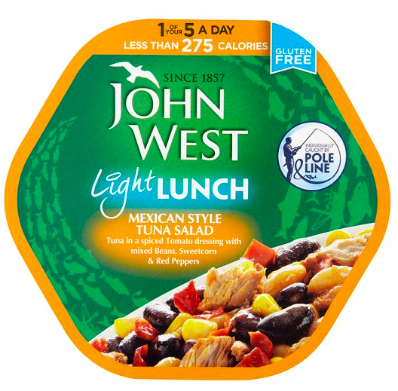Had enough of grocery pundits pontificating on consumer trends that will take the market by storm in 2017? What do they mean for your business? Are they a genuine trend, or just fancy or fad?! Here’s some thoughts to consider during this end-of-year trendfest.
First of all, looking back is a good start before looking forward:
- Take tea, it’s our national drink and consumption per person has halved over the past 40 years or so – in 2016, the big brands of “builders’ tea” (e.g. PG Tips, Tetley, Typhoo) had a shocking year. So, bail out of tea? Well, no, upmarket teas (e.g. “single estate” teas with provenance) fared much better and green and herbal teas have had continued growth. In fact, the fermented tea, Kombucha, is highly prized by the chattering classes and, bet your boots, they’ll be drinking it with chia seeds before you can say “quinoa”!;
- What are we drinking hot if not tea? Instant coffee is struggling to hold its own, but retail sales of roast and ground coffees are on the up – not least in coffee pod form (accelerating since Nespresso compatible pods hit the market). But, it’s been on the High Street where the likes of Costa, Caffè Nero and Starbucks have flourished. Now, you have to go to night school to learn how to order coffee. Coincidentally, the long-term downtrend in cows’ milk would have been more drastic if not for milk in coffee taking up the slack created by falling sales of RTE breakfast cereals;
- and, in fresh foods, haddock and cod have seen similar long-term declines. Here, it’s more about availability, product knowledge and price rather than the British eschewing one of our famous national dishes (i.e. fish & chips). Supply has been constrained by EU fish quotas (quite rightly), haddock and cod loins have become premium meat cuts still much loved in small portions by oldies but more likely to be exchanged for much cheaper pre-prepared basa fillets by younger consumers unwilling to fuss with fish!
Looking at the UK grocery retail market by category in 2016, what trends can we glean from looking at categories that experienced volume growth? Incidentally, of 112 categories analysed, 40% saw volume increases and 60% volume declines which underlines how tough it is out there in the market place – our UK population grew by 450,000 people in 2016 but the volume of groceries sold shrank in more than half of categories. Does that mean we’re eating less and the nation is wasting away? We think not!
Who did well?:
- products that are perceived as being good for health and our well-being, and for improving our bodies – “free from” leapt forward, bottled water and sports nutrition products did very well, fresh berries were stellar performers as they have ben for the past 12 years, and products that eased the pain of hard times progressed – e.g. alcoholic drinks particularly sparkling wine, condoms and sex toys, and cosmetics. Mars produced “Protein” versions of its Snickers and Mars bars to ride the non-meat protein trend – the guilt of the indulgent snack can be assuaged by the thought that it’s high protein and contributes to body shape and fitness!

And who struggled to gain volume growth in 2016?:
- anything in cans – fruit, meat, fish, soup, beans. Bail out of cans? Not necessarily – redefine the can! John West’s “Light Lunch” is in a contemporary can and ticks a dozen trend boxes – tasty, healthy, one of your 5-a-Day, calorie-controlled, gluten-free, snack/mini-meal, simple and few ingredients, convenient (to buy, carry, eat, dispose), no refrigeration, fish-friendly, recyclable and the reassurance of a famous brand – brilliant (as are JW’s Steam Pots and Infusions);

- frozen products had a tough year – particularly pastries, desserts, pizza, ready meals – and, maybe, this is a British problem for frozen where chilled value-added foods are perceived to have the quality edge and are an affordable indulgence. One answer is to up NPD as McCain for mini-roast and jacket potatoes and Young’s for fish have shown. There’s a more profound problem for frozen foods, ‘tho – the frozen aisle isn’t welcoming (cold and products are behind frosted glass) and it’s easy to by-pass if “we don’t need French fries and peas this week”!;
- the demonization of sugar and pervasive interest in weight reduction has hit several categories very hard – fruit juice, carbonated drinks, yoghurts, jams, sweet biscuits, for goodness sake even chocolate bars – and products seen as being “carbohydrate-heavy” have struggled, such as sliced bread and dry pasta, although reflecting the strong interest in Asian cuisines, rice and noodles have surged on;
- and, then, there’s red meat, sausages, bacon, etc. – volume and even more value declined as UK per capita meat consumption struggles to hold historic levels – health, animal welfare concerns and, for some, tight budgets constrain meat purchases. Emerging is consumer interest in a flexitarian dietary approach to food – “sometimes I feel vegetarian and sometimes I don’t” and the market has responded with a wave of convenient, tasty non-meat snacks and meals and, for dairy, “non-dairy dairy” as coconut/almond/even pea milks are on the same shelves
as cows’ milk. Plant protein meat analogues and plant milks are just niche market stuff? Not so: Tyson and General Mills have bought into meat analogue start-ups and Danone shelled out $10 billion for WhiteWave Foods – owner of Alpro

Picture: Deliveroo.
On trends, one thing is certain – “Big Food” is MUCH more attentive of what’s happening in the pool where food company minnows spawn and grow. The top 5 owners of $billion megabrands saw their sales slip by $15 billion in 2015/16. Silicon Valley entrepreneurs have turned their attention to plant protein foods and non-traditional routes to the consumer – a crazy $5.5 billion has been invested in food delivery start-ups over the past 5 years e.g. Deliveroo is in 100 cities across 12 countries. In its UK home market, Deliveroo is opening 20 “Rooboxes” (so-called “Dark Kitchens”) this year where restaurants with restricted space can expand to establish “delivery only” kitchens from which meals can be delivered within 30 minutes of ordering. Big changes coming – we’ll look back in 20 years at social media holograms showing stressed shoppers in traditional supermarkets buying, to use an old-fashioned term, ingredients for the evening meal and howl with laughter. What were they doing?!
While we have your attention, Happy New Year from David and Miguel and may it be both rewarding for your families and your businesses.
Leave a comment